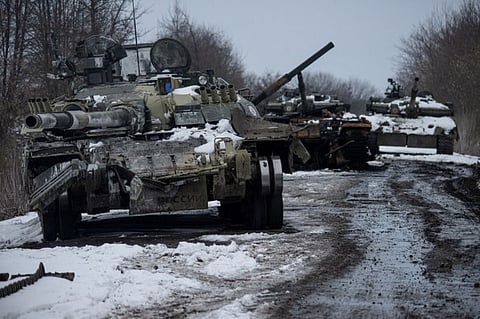Ukraine’s arms sales
That would be a blow for Russian exporters but also for Vietnam, which has competing claims against China in the South China Sea.
The situation in Ukraine also disrupted the Ukrainian arms supply to Hanoi which totaled $200 million from 2000-to 2021.
Ukraine was part of the Soviet and then Russian defense industries even after proclaiming independence. It has been a major supplier of aircraft and spare parts, as well as armored vehicles and munitions.
From 2009-to 2014, up until the annexation of Crimea, Ukraine was among the world’s 10 largest arms exporters, according to SIPRI.
In 2012, it was the fourth-largest arms exporter. Kyiv sold $1.3 billion worth of conventional arms that year. Ukraine’s state-owned exporter Ukrspecexport had contracts with nearly 80 countries.
In its heyday, the company ran 100 arms-producing plants and factories and employed tens of thousands of workers.
Besides Vietnam, in Southeast Asia, Thailand and Myanmar were also big customers that spent $479 million and $111 million on Ukrainian weapons respectively from 2000-to 2021.
In 2011, Bangkok ordered 49 T-84 Oplot battle tanks and 236 BTR-3E armored vehicles from Ukraine. However, the delayed deliveries of the Oplots due to the Crimea crisis forced Thailand to buy VT-4 main battle tanks from China instead.
Bangladesh, Cambodia, Laos, and Indonesia also bought weapons from Ukraine, though in much lesser quantities.
A Bangladesh military officer, Brig (Rtd) Sakhawat Hossain, told RFA-affiliated online news service BenarNews that the Bangladesh Air Force mainly uses Russian and Ukrainian MI helicopters and Antonov planes.
“Many of the spare parts of the helicopters and planes are produced in Ukraine. The import of such spare parts and military hardware would now be stopped,” Hossain said.
Another former Bangladesh serviceman, Air Commodore (Rtd) Ishfaq Ilahi Choudhury, said that the war in Ukraine would not create any problem in operating the aircraft in the short term.
“But in the long run we may face problems as the Russian forces attacked the Antonov plant,” he said. (AA/RFA)


